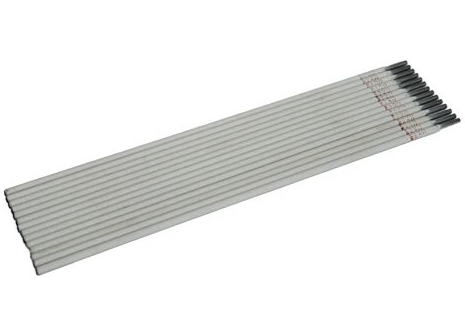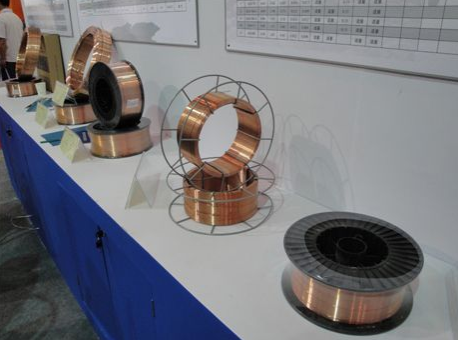You are often not consciously thinking about the numbers on a welding rod while you are actually welding. When you’re holding that stinger and laying beads into a joint, aside from your overall welding skill and knowledge of the machine, there are factors that determine the quality of the weld. It starts with the kind of electrode that you are using.
On the side of that electrode is something that looks like a code. To the layman, it probably doesn’t make much sense. But for welders of all levels, it is important to have at least a passing familiarity with the types of electrodes that you will be using.

AWS A5.1 E6011
SMAW Electrodes
Welding electrodes, more commonly called welding rods, are long pieces of filler metal covered in flux. They are intended to be used for SMAW (Shielded Metal Arc Welding or Stick). Through the use of a constant current from a welding power supply, the filler metal is melted and deposited into the base metal while the flux helps ensure the integrity of the weld. Here are some of the most common welding rods.
E6010 – an all-position rod especially used in pipe welding, known for its tight arc
E6011 – an all-position rod that is a preferred choice for maintenance work, or where metal is rusted and/or dirty
E7018 – an all-position rod that is the preferred choice for Ironworkers and erectors due to its greater tensile strength and versatility
E7024 – A rod that can only be used in horizontal and flat positions. Sometimes called “jet rod.” Produces a large puddle that cools slowly, hence it is only used in flat and horizontal positions. The high level of iron powder in the flux aids this process.

AWS ER70S-6
These are just a few of the many welding rods. As we can see, they all have slightly different traits ranging from arc characteristics to tensile strength, to the position they can be welded. But what can the number tell us about the characteristics? Let’s take a look.
What Do the Numbers on a Welding Rod Mean?
SMAW Electrodes
Let’s take the electrode E7018 as our point of departure in order to explain the numbering system.
E – This signifies that the rod is a current-carrying electrode.
70 – These two digits indicate that there is 70,000 psi (pounds per square inch) of tensile strength in the weld.
1 – the ‘1’ indicates that it is an all-position rod. 2 means that the rod can only be used in the flat or horizontal position.
8 – the ‘8’ indicates that the rod has low hydrogen potassium with iron powder coating and that it can be used with all polarities (DC+, DC-, or AC).
The final number, ‘8’ in the case of our E7018 rod, requires more explanation. Here is a detailed chart that will help you determine what kind of coating is indicated by the number, as well as the polarity to be used when welding:







